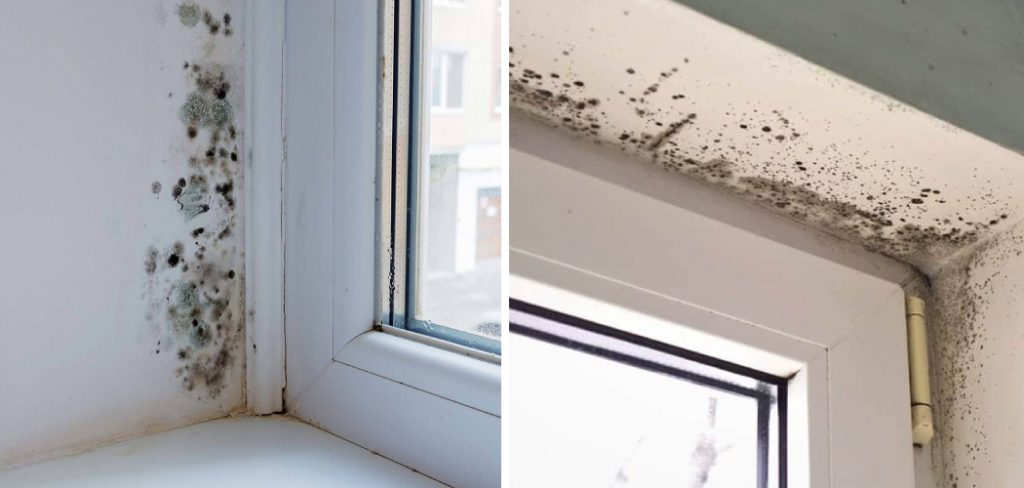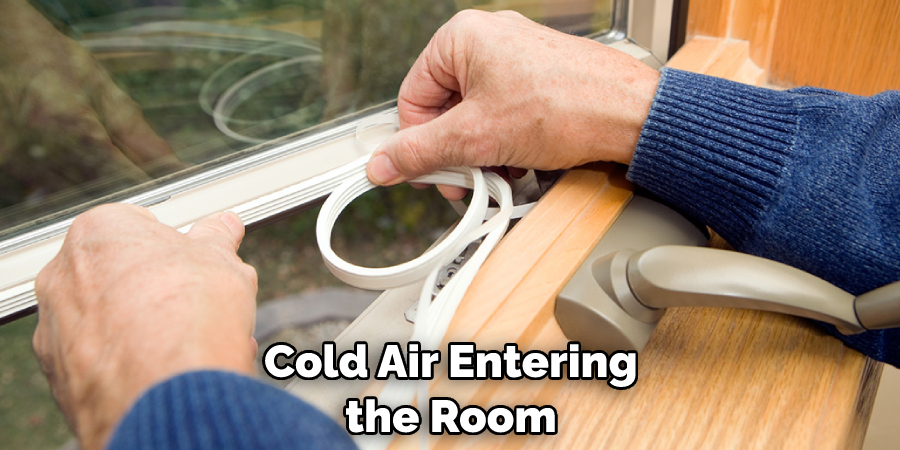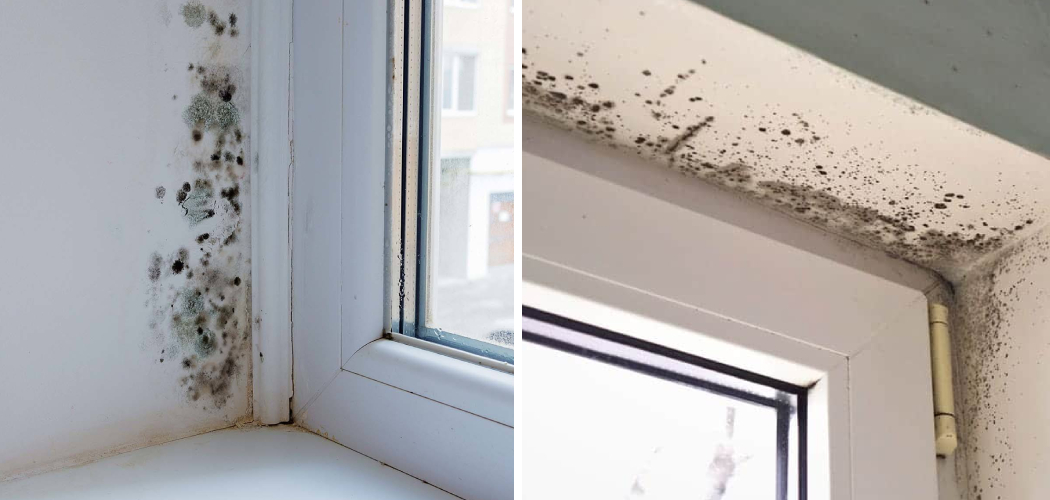Are you noticing condensation building up on your bedroom walls? This can be an irritating problem, but it is possible to reduce or even eliminate wall condensation.

If you’ve ever dealt with condensation on walls in your bedroom, you know how disheartening it can be. Finding yourself waking up to damp and cold walls can put a damper on your days and leave you feeling like the situation will never get any better. Fortunately, there are ways to combat those pesky wall droplets and return some coziness back to your bedroom space!
In this blog post, we’ll discuss different steps on how to stop condensation on walls in bedroom so that you can keep crafting those beautiful creations without the worry of moisture seeping through.
What Will You Need?
To get started, you will need a few items to address the condensation on your bedroom walls properly. Here is a list of the items you will need:
- Dehumidifier
- Insulation material
- Weatherproof sealant or caulk
- Fans or air movement system
Once you have gathered all the necessary materials, it’s time to start tackling the issue of wall condensation in your bedroom.
10 Easy Steps on How to Stop Condensation on Walls in Bedroom
Step 1: Find the Source:
First, you’ll want to understand the source of your condensation. Generally speaking, wall condensation is caused by high humidity and warm air. To be able to address this issue, you must first determine the origin of the moisture.
Step 2: Install a Dehumidifier:
Dehumidifiers can help to reduce moisture and condensation in your bedroom by extracting water from the air. If possible, set up a dehumidifier in your bedroom so it can start pulling dampness out of the air and reducing wall condensation. It will also help to remove any musty smells from your room.

Step 3: Insulate Your Walls:
If your walls are not properly insulated, warm air will be able to escape through cracks or holes in your walls and cause condensation on them. You can install insulation material between the interior walls and exterior wall cladding to keep warmth inside where it belongs! This will also help you reduce energy costs.
Step 4: Weatherproof Sealing:
If there are any cracks or holes in your walls, it is important to seal them with a weatherproof sealant or caulk. Doing so will prevent warm air from escaping and causing wall condensation. Additionally, you can use insulation material around windows and doors to further reduce the amount of warm air that escapes.
Step 5: Circulate Air:
In order to combat condensation on walls in the bedroom, it’s important to ensure the air is circulating properly within the space. You can do this by investing in fans or an air movement system that will keep fresh air moving throughout the room instead of settling around walls and surfaces where it can cause condensation. If you do not have access to an air movement system, opening the windows for a few minutes each day can help keep air circulating throughout the room.
Step 6: Address the Humidity in Your Home:
Your home’s humidity levels should also be addressed if you want to properly remove wall condensation. To do this, you’ll want to invest in a hygrometer which will allow you to measure the amount of moisture in your air and use dehumidifiers and fans as needed. Additionally, you can run exhaust fans during showering or cooking to help keep excess humidity at bay.
Step 7: Invest in Quality Window Treatments:
Window treatments such as curtains or blinds can help reduce the amount of warm air that escapes through windows. Investing in quality window treatments is a great way to help keep your bedroom temperature consistent and reduce wall condensation. Try to choose materials that are both insulating and moisture resistant.

Step 8: Regularly Clean Your Walls:
Regularly cleaning your walls is also an important step in reducing wall condensation. You’ll want to make sure any dust or dirt that could be collecting near the walls is removed, as it can contribute to higher humidity levels within a room. Remember, the more moisture in the air, the more likely it is that condensation will form on your walls.
Step 9: Adjust Temperature Settings:
Finally, adjusting your thermostat to a lower setting can help reduce the amount of warm air that can escape through windows or cracks in the walls, which will help you better combat wall condensation. This may also help save money on energy costs! Be careful not to turn it too low, as this could cause the air in your bedroom to become too cold.
Step 10: Stay Vigilant & Monitor Conditions:
It is important to stay vigilant in monitoring humidity levels and temperatures within your bedroom and take action when necessary. With a little bit of effort, you can keep wall condensation at bay and create a comfortable environment in which you can rest and relax. Ensure to check walls regularly and take action when necessary.
With these ten easy steps on how to stop condensation on walls in a bedroom, you’ll be able to effectively reduce this issue while also creating a more comfortable space for yourself! Don’t wait any longer – try it out today!
5 Additional Tips and Tricks
- Increase ventilation in the bedroom. Open windows and doors as much as possible to allow air to circulate freely and reduce moisture levels.
- Invest in a dehumidifier. This will help draw out excess moisture from the room and prevent it from settling on walls and other surfaces.
- Clean your bedroom regularly with warm, soapy water to remove any mold or mildew that may have formed due to condensation.
- Use wall insulation materials such as polystyrene boards, or install double glazing to help keep warmth inside the room and stop cold air from entering through cracks in doors and windows.
- Make sure you’re using good-quality, breathable bedding, such as cotton or linen. This will help to prevent any excess moisture from accumulating in the bedroom.

If these tips don’t work, you may need to consider calling in a professional who can provide advice on how best to tackle condensation on walls in your bedroom. With their expertise and assistance, you’ll be able to stop condensation once and for all.
5 Things You Should Avoid
- Leaving wet clothes on radiators or other heat sources in the bedroom.
- Blocking air vents with furniture or curtains, as this will prevent fresh air from entering the room.
- Place large potted plants inside your bedroom, as they can release a lot of moisture into the air during photosynthesis.
- Using shower curtains or other plastic materials to cover windows and doors, as these can trap heat and moisture.
- Store items such as books, clothes, and toys in areas that are prone to condensation. These items will absorb any moisture in the air, further exacerbating the problem.
Following these tips can help you prevent condensation on walls in your bedroom and keep your room free from dampness and mold. Don’t let condensation be a problem any longer – take action today!
What Causes Condensation on Bedroom Walls?
A number of factors can cause condensation on bedroom walls. These include high humidity levels, cold air entering the room from outside temperatures, and inadequate ventilation. Poor insulation around windows and doors can also contribute to condensation buildup in bedrooms. To tackle this problem, it’s important to identify the underlying causes and take steps to reduce them.

Another major contributor to condensation on bedroom walls is the accumulation of water vapor from activities such as showering, cooking, and washing clothes. All of these activities release moisture into the air, which then condenses on cold surfaces such as walls and windows.
With these tips and tricks in mind, you should be able to stop condensation on your walls in no time! Act now so that you can enjoy a dry bedroom all year round. You’ll be glad you did!
Conclusion
This is just one of the many strategies to fighting condensation that can plague your bedroom walls. If you have a bigger budget or higher threshold for DIY projects, you could even consider investing in lighting, heating, and ventilation systems to really get rid of the humidity that can cause condensation indoors. Above all else, don’t forget that prevention is key!
Keep your home at an optimal temperature range and clean out any moisture-causing items or materials, and regularly check up on your windows for signs of wear and tear so you can take action sooner rather than later.
Sometimes adding a touch of craftwork to your bedroom walls i.e. painting flowers or entire landscapes, can improve air circulation in your bedroom while simultaneously giving a refresher look to your bedroom. Moreover, suppose you’ve followed these steps and still noticed condensation in your room. In that case, it might be time to consult a professional about the ultimate solution relevant to your situation.
Hopefully, the article on how to stop condensation on walls in bedroom has been helpful in providing useful tips on how to keep your bedroom free from any moisture-related issues.
